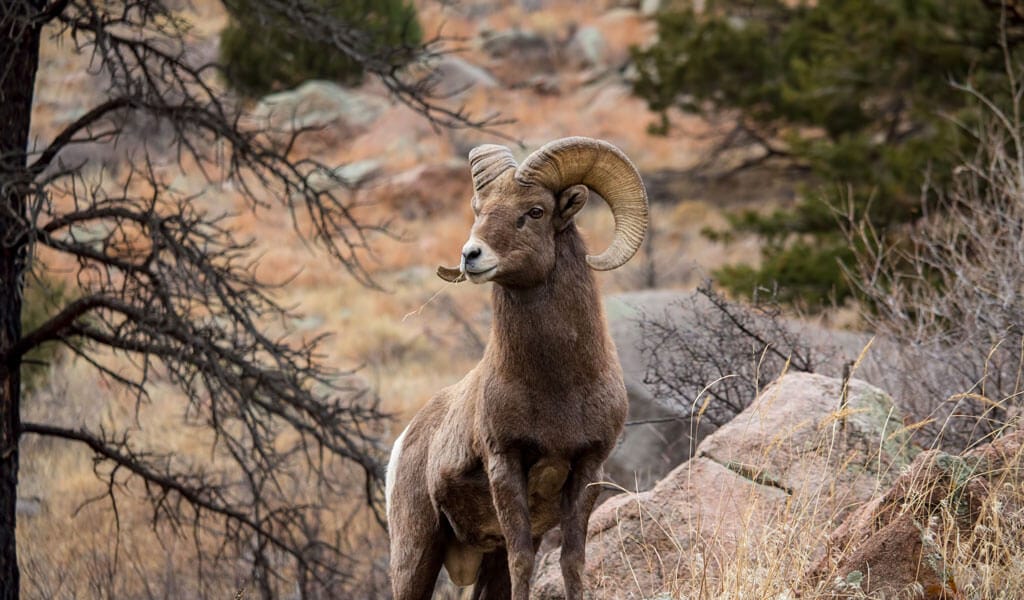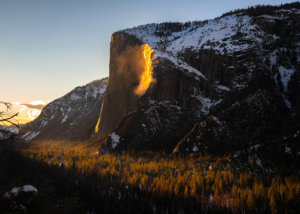A powerful storm rolls through, smothering the slopes of California’s tallest peaks. Their rocky crowns pierce the heavens, a jarring contrast between pure white snow, dark granite, and the deep blue winter sky. In Yosemite Valley, a lighter dusting leaves the Park serene and still. The alders along the Merced River have dropped their leaves. Mist hangs in the naked branches, and the surrounding conifers appear bushier, greener. Welcome to winter in the Sierra, when wildlife viewing is at its best and visitors can be at peace with the beasts in a pristine playground where the animals prance, hop, lumber and soar freely.
The Showboats
Whether it’s mule deer or water dippers, bears or birds of prey, these stars of the brumal (yes, it’s a word!) stage are adept at braving the elements and can often be seen in our Sierra winters. Meet Yosemite Mariposa’s party animals:
California Mule Deer
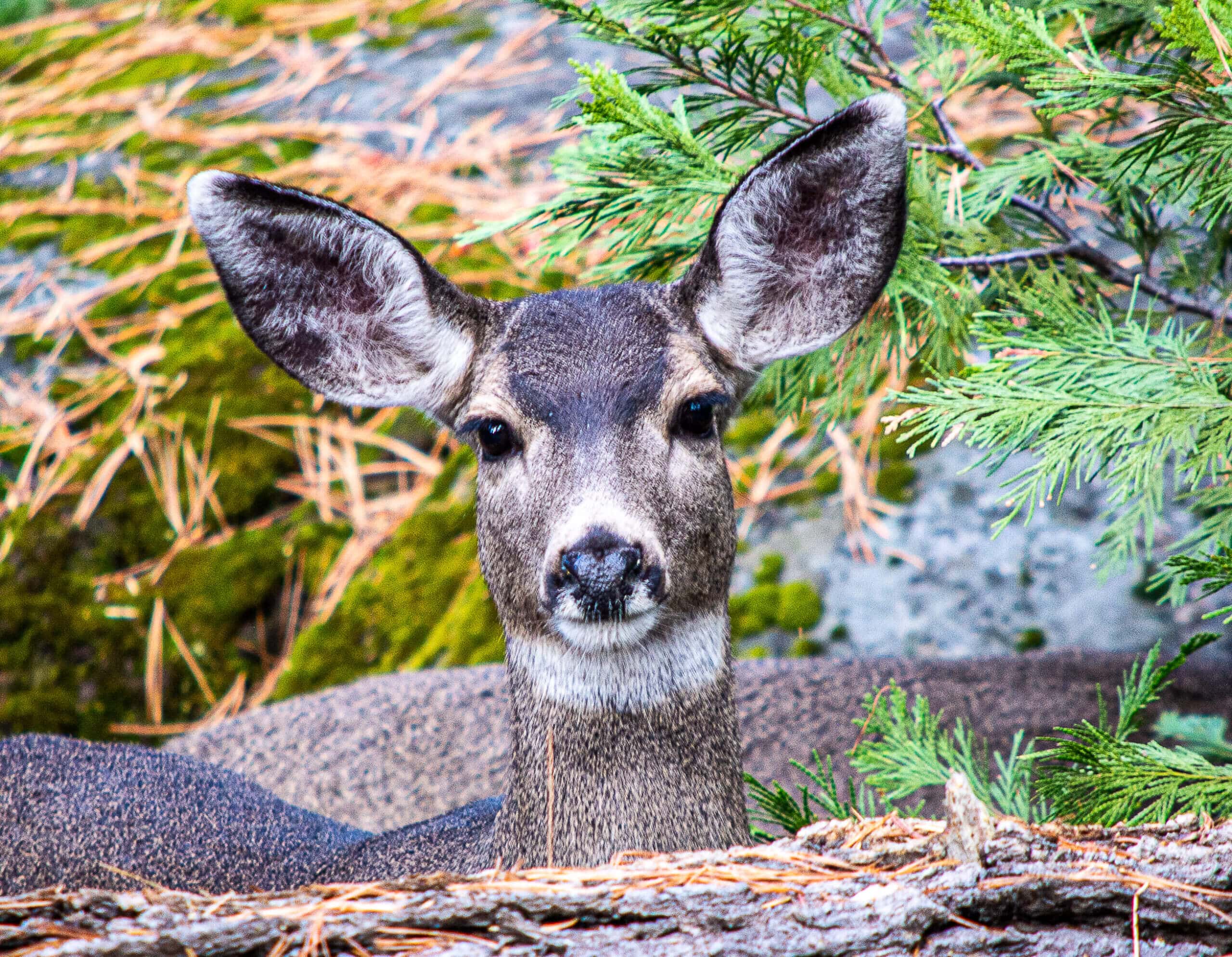
With their black-tipped tails and forked antlers, California Mule Deer (Odocoileus hemionus californicus) are commonly found snacking on shrubs and prancing across the meadows of Yosemite. Winter is a time when fawns begin to venture farther from their mothers and learn to forage for themselves, while late in the season is when the bucks’ antlers fall off in anticipation of spring regrowth. Try early mornings and evenings for prime viewing.
Mountain Coyote
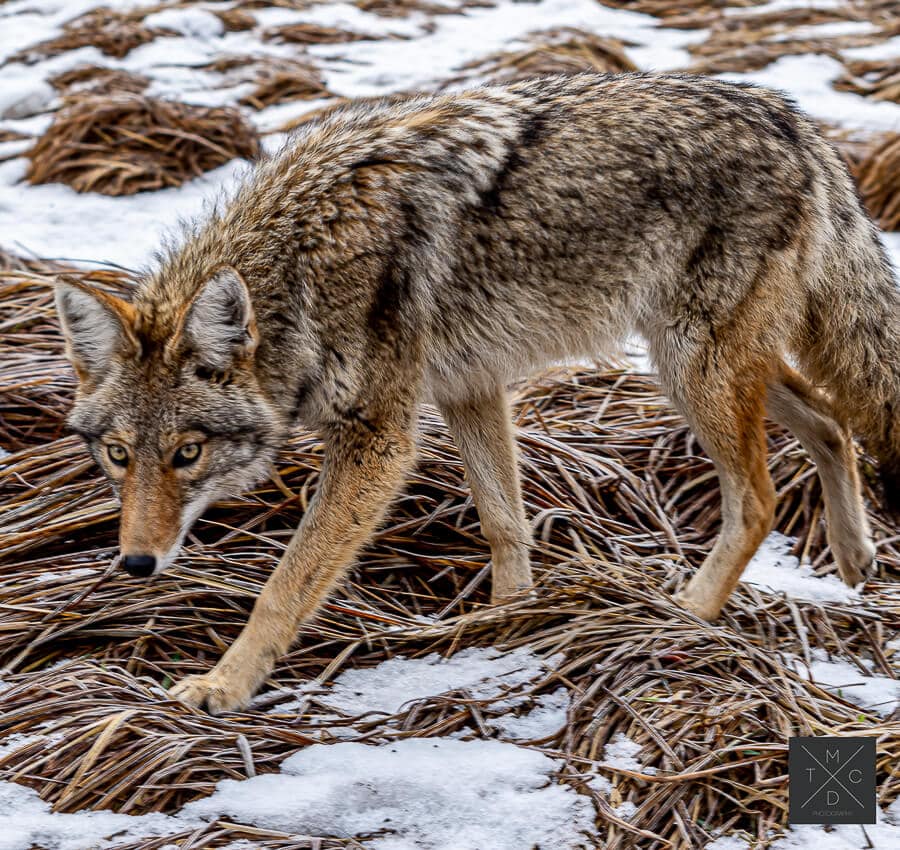
Known in Native American folklore as tricksters, coyotes (Canis latrans) are highly adaptive mammals with nearly twenty subspecies. They live in small of packs of closely related adults and their young, howling to each other with a distinctive yip yip yip. The search for food in winter is a bit tricky, even for the trickster. Coyotes often walk through meadows listening for small mammals moving beneath the snow. Head cocked, they pinpoint their next meal, jump up and dive snout-first into the powder!
Squirrels
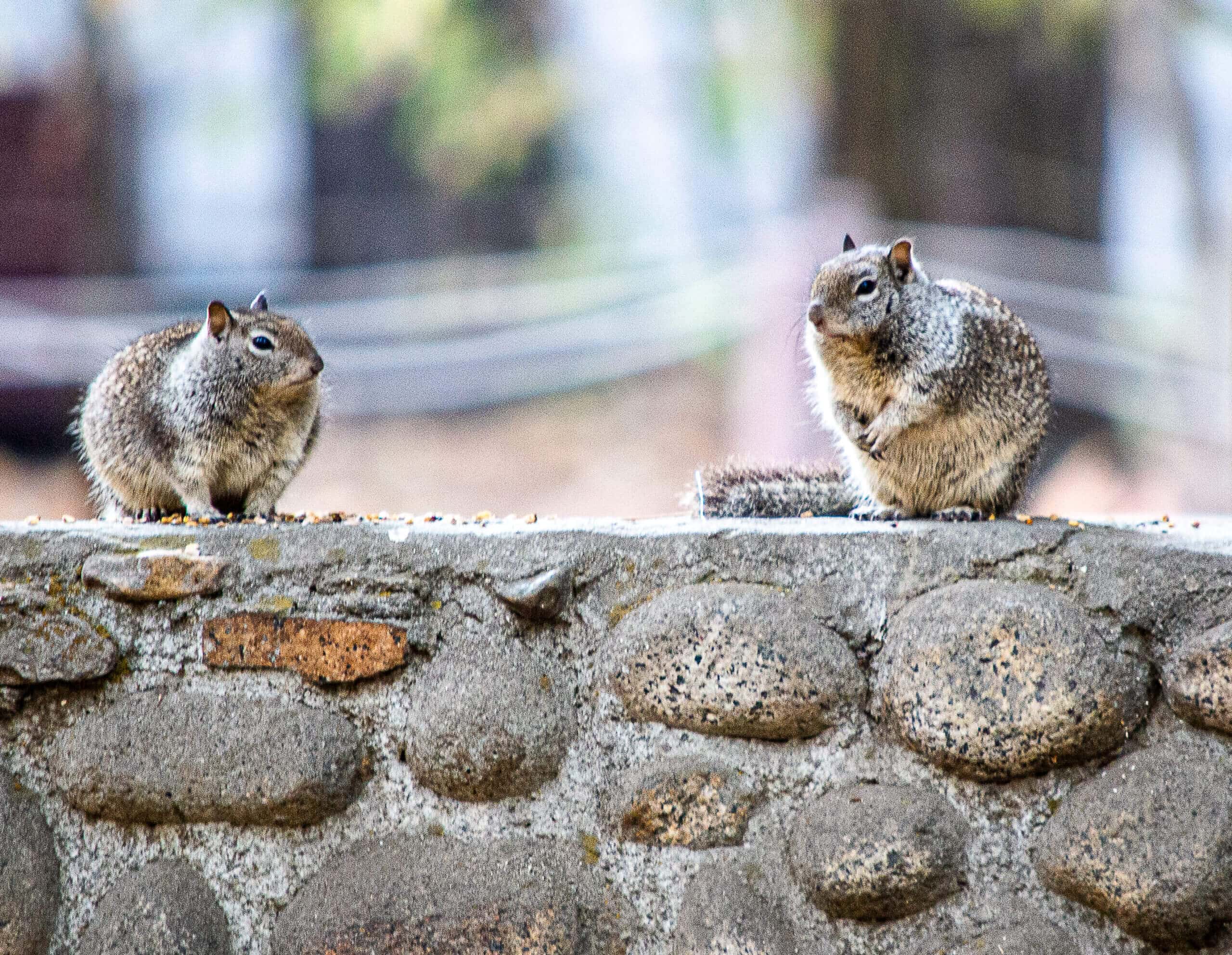
These frisky friends of Yosemite National Park are fun to watch for their climbing, scurrying and bouncing. There are four common types: the Western gray squirrel with its long bushy tail, and the Douglas red squirrel (Chickaree) with its distinctive squeaking sounds, are both tree dwellers and much more active in winter. The Golden-Mantled ground squirrel with its striped back, and the California ground squirrel with its white specks, live in burrows and hibernate at higher elevations but can be seen in winter during prolonged warm spells or at lower elevations. With a diet that consists mainly of tree nuts, fruit and, yes, fungus, squirrels can often be seen cutely munching their favorite snack. Sometimes, when they forget where they buried their future meal, a tree sprouts thus re-populating the forest!
Birds

Fly south? Nah. Recognized as a Global Important Bird Area, Yosemite hosts over 70 bird species that overwinter. Distinct by appearance and sound of call, identifying these feathered friends is a fun, all-senses-on-deck, experience. A few plumed extroverts of the winter sky include the spiky Steller’s Jay, the waterfall-piercing American Dipper, the surprisingly tame Sooty Grouse and the screeching Red-tailed Hawk. You might even enjoy the rapper’s delight of the well-coifed Hairy Woodpecker echoing through the forest! If you’re lucky, you may be able to spot the majestic American Bald Eagle soaring over Yosemite Valley.
The Shy Ones
From the remote talus slopes above the tree line to hunting crayfish in icy streams, these creatures are difficult to spot as they go about their winter lives.
Bears
Yes, black bears (Ursus americanus) typically hibernate in winter, but at lower elevations such as El Portal and in the Yosemite Valley they occasionally take a pass on deep sleep and forage for food instead. Almost 90 percent of black bears in Yosemite are actually brown and are sometimes confused with Grizzlies, which have been extinct in California since the 1920’s. Carefully managed, the total number of black bears in the Park is approximately 300-500 so please drive safely and treat these amazing animals with the respect they deserve!
California Mountain Lions
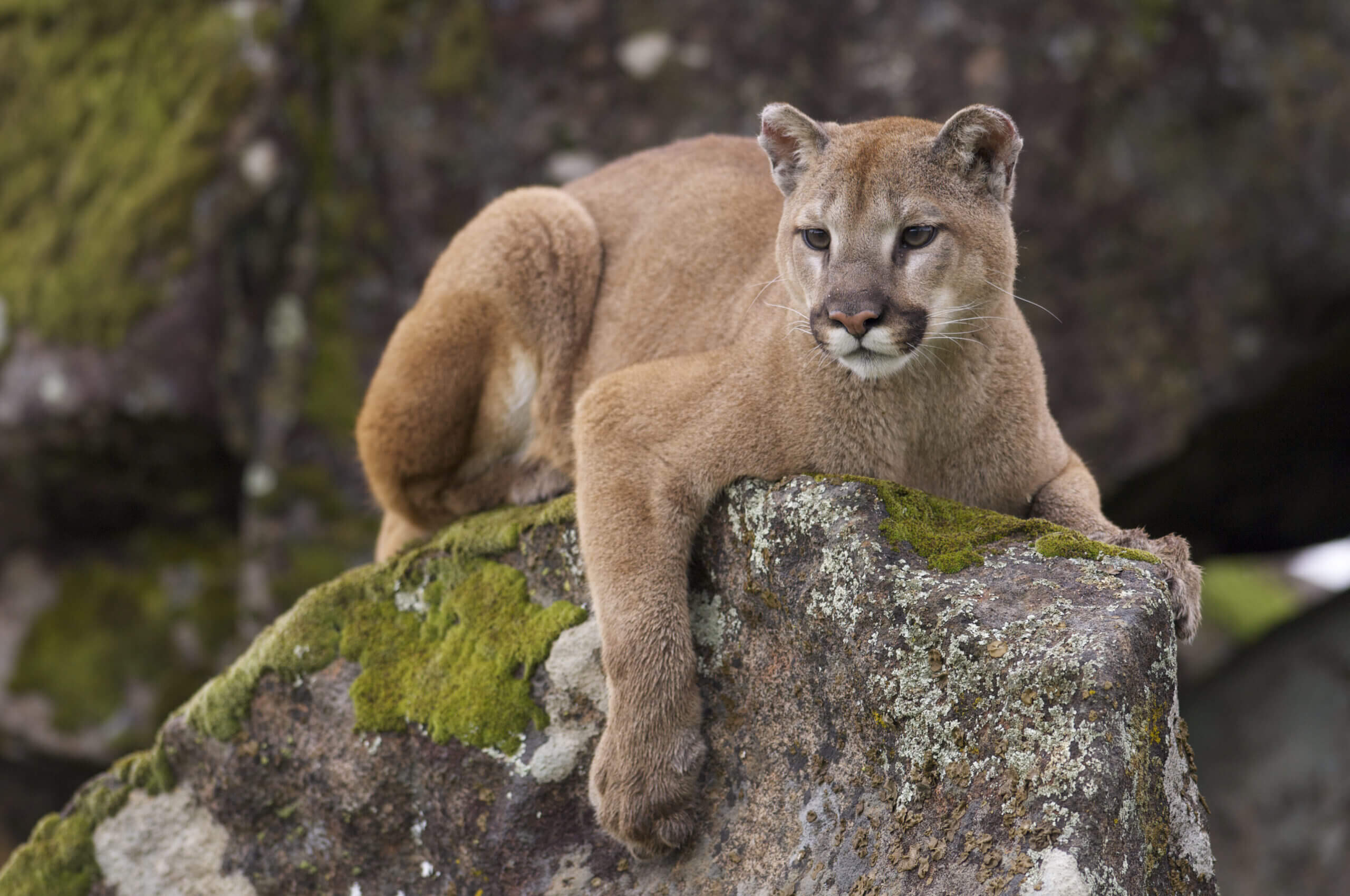
Called gato montés (cat of the mountain) by early Spanish explorers, these strapping and beautiful creatures are rarely encountered by humans, instead living quietly in the shadows of our shared wilderness hunting deer and other food. With use of G.P.S. tracking collars, scientists estimate that at least 50 live in Yosemite National Park, if not more. Ironically, mountain lions are most often sighted in developed areas of the Park stalking or chasing raccoon or coyote.
Sierra Nevada Bighorn Sheep
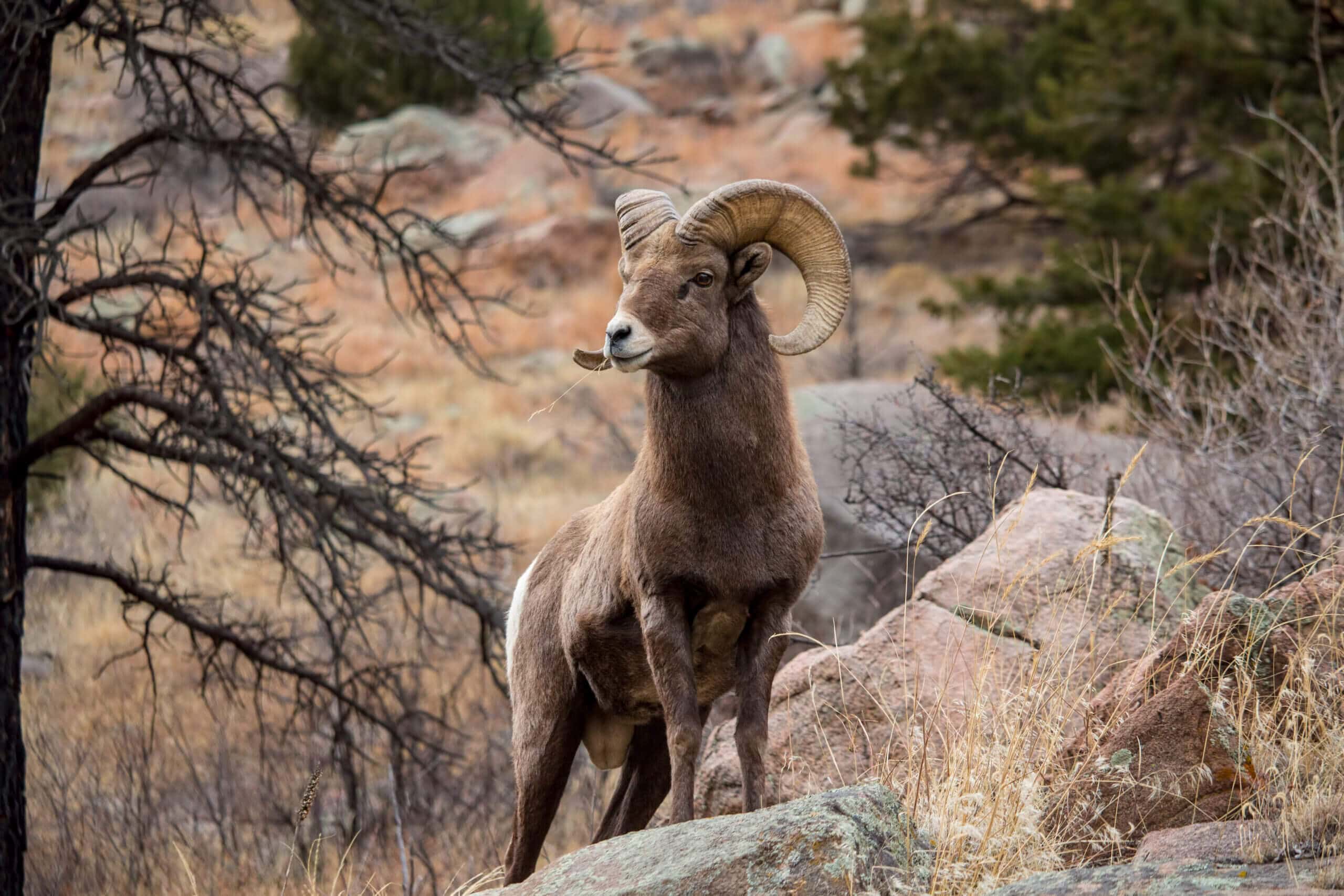
Nearly decimated within 25 years of Yosemite’s 1890 opening due to disease from domestic sheep and unregulated hunting, the Sierra Nevada Bighorn Sheep was reintroduced into the Park’s eastern Cathedral Range in 2015. Impressive for its ability to climb steep granite cliffs, the Bighorn is found at high elevations, wary of predators, and thus difficult to see. It also faces a yearly life or death dilemma “” stay up high in winter where the conditions are fierce and food scarce, or head to lower elevations where food is more plentiful but mountain lions lurk!
Sierra Nevada Red Fox
Once nearly extinct, this cute little member of the canine family was last seen in Yosemite National Park in 1916 but was recently photographed by motion detector cameras in the remote northern high country. At 5 to 10 lbs, the Sierra Nevada Red Fox is smaller than lowland red foxes. It can range in color from yellowish to even black, and has a white blaze on its chest with a bushy tail with white tip. Like its cousin the coyote, this Sierra Nevada Red Fox hunts small rodents beneath the snow, diving snout-first into the frosty expanse. There are only a handful roaming the Yosemite wilderness (elevations above 6,000 feet) so it’s unlikely you’ll spot one, but it’s comforting to know these little survivors are out there. Who doesn’t love a comeback story?
Snowshoe Hare
There’s something irresistible about a furry, bouncy bunny, not to mention one that turns white in winter! With its large hind legs that act as “snowshoes” atop the crust of snow, the Snowshoe Hare (Lepus americanus) snacks on conifer needles and leaves of evergreen shrubs in the coldest months. They are considered a Species of Special Concern in California so if you spot one help our scientists by reporting it here. Not sure what type of rabbit you’re seeing? Use this comparison chart to tell the difference!
Where To View
Winter wildlife viewing in Yosemite Mariposa offers lots of options, from searching through the windows of a toasty family car (AWD/snow chains a must!) to backcountry exploration on snowshoes. Some of the best spots within the Park are Yosemite Valley, Hetch Hetchy to the north and Wawona to the south. Take note of elevation “” the difference between 4,000 feet and 6,000 feet can be dramatic when it comes to snow depth, so check weather forecast and winter road conditions before you go.
The other consideration is time of day. Knowing if animals are diurnal or nocturnal is key, not to mention known habitat such as elevation and whether they prefer open spaces or deep forests. Animal tracking is also a useful tool, whether it’s identifying paw prints or even scat! For pro tips on how to explore responsibly, check out Nature Rules: Keep Wildlife Wild and most importantly enjoy the beauty of Yosemite Mariposa winters!

